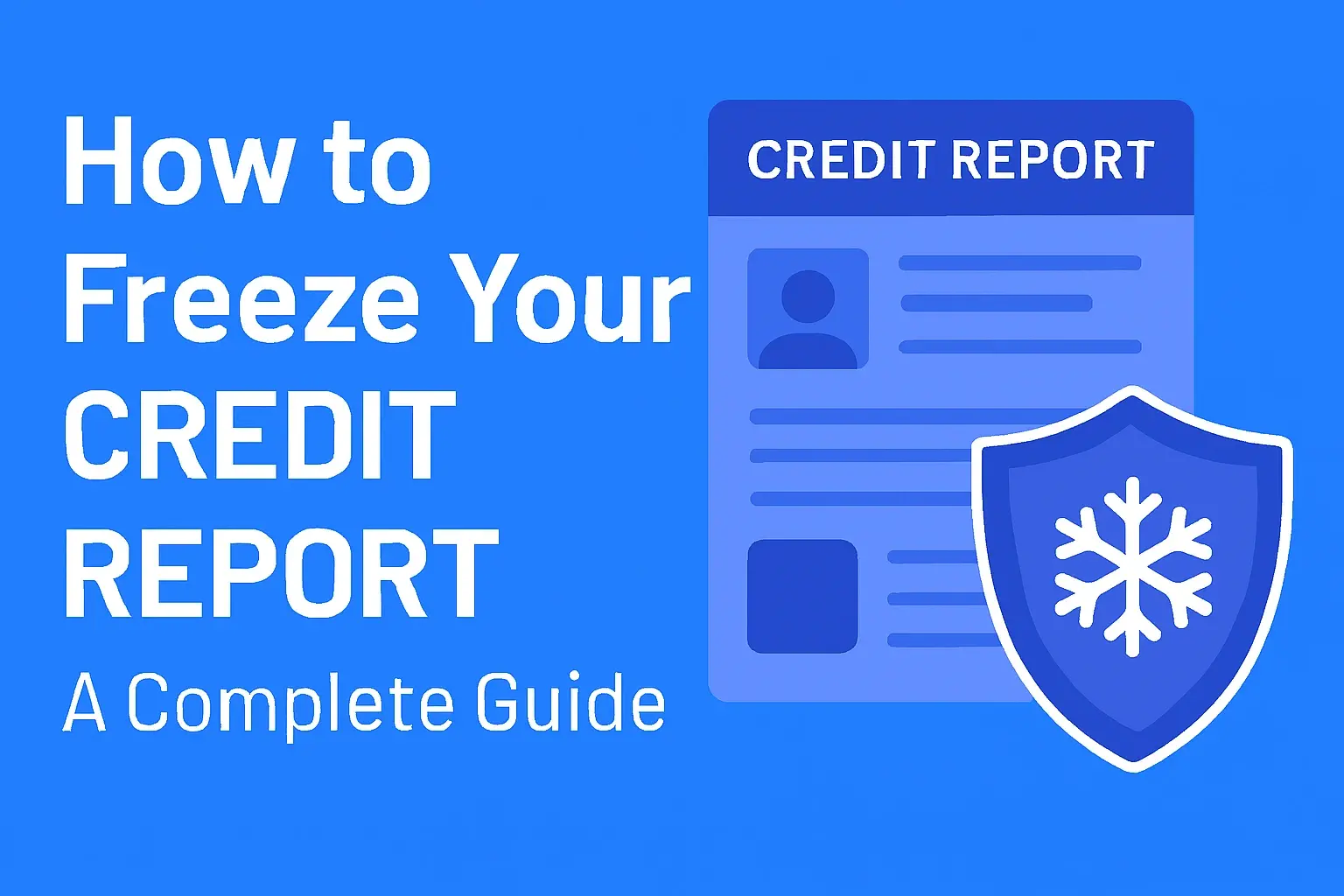-
Posted on: 24 Dec 2022

-
Understanding why your credit score might be low is the first step toward improving it. This comprehensive guide dives deep into the most common culprits behind a poor credit score, offering clear explanations and actionable insights for 2025.
Late or Missed Payments
Perhaps the most significant factor impacting your credit score is your payment history. Lenders want to see that you are a reliable borrower, and consistent on-time payments are the strongest indicator of this. When you miss a payment or pay late, it sends a clear signal that you may struggle to meet your financial obligations. This behavior is heavily weighted by credit scoring models, making it a primary reason for a declining credit score.
How Late Payments Affect Your Score
Credit scoring models, like FICO and VantageScore, assign a substantial portion of your score to your payment history – often around 35% for FICO. Even a single late payment can cause a noticeable drop, especially if your credit was previously in good standing. The severity of the impact depends on several factors:
- How late the payment was: A payment that is 30 days late will have a less severe impact than one that is 60 or 90 days late. Payments that are 90 days or more past due are considered severely delinquent and can significantly damage your score.
- How often you pay late: A pattern of late payments is far more detrimental than an isolated incident. If you have multiple accounts with late payments, your score will suffer more.
- Your credit score before the late payment: If you had an excellent credit score, a late payment will likely cause a larger point decrease than if your score was already fair or poor.
- The type of account: Late payments on credit cards and installment loans (like mortgages or auto loans) are generally weighted more heavily than late payments on utility bills or rent, though some reporting agencies now include rent payments.
The 2025 Landscape: Trends in Payment Behavior
In 2025, lenders continue to prioritize on-time payments. Economic fluctuations can sometimes lead to increased instances of late payments. Data from 2025 suggests that consumers facing unexpected financial pressures, such as rising inflation or job market uncertainties, may be more susceptible to missing payments. Credit bureaus are sophisticated in identifying these patterns. Furthermore, the rise of digital payment reminders and automated payments offers tools to combat this, yet human error or deliberate neglect can still lead to negative consequences.
Strategies to Avoid Late Payments
The best defense against a low credit score due to late payments is prevention. Here are some effective strategies:
- Set up automatic payments: Most lenders offer automatic payment options. Ensure you have sufficient funds in your account to cover the payment.
- Use payment reminders: Utilize calendar alerts, phone reminders, or budgeting apps to notify you a few days before the due date.
- Pay at least the minimum amount: If you cannot pay the full balance, always pay at least the minimum amount due to avoid a late fee and a mark on your credit report.
- Communicate with your lender: If you anticipate a problem making a payment, contact your lender *before* the due date. They may be willing to work out a payment plan or offer a temporary deferment.
- Consolidate your debts: If you have multiple bills with different due dates, consider debt consolidation to simplify payments into one monthly due date.
For more detailed information on how payment history is calculated, you can refer to our guide on Understanding Credit Scoring.
High Credit Utilization Ratio
Your credit utilization ratio (CUR) is a critical component of your credit score, often accounting for about 30% of your FICO score. It measures how much of your available credit you are currently using. A high CUR signals to lenders that you might be overextended and relying heavily on credit, which can be perceived as a higher risk.
Understanding Credit Utilization
The CUR is calculated by dividing the total balance on your revolving credit accounts (like credit cards) by your total credit limit across those accounts. For example, if you have a credit card with a $10,000 limit and a balance of $5,000, your utilization on that card is 50%. If you have multiple cards, the total balances are summed and divided by the total available credit across all cards.
Formula:
Credit Utilization Ratio = (Total Balances on Revolving Credit) / (Total Credit Limits on Revolving Credit) * 100What is Considered a "High" Utilization Ratio?
Experts generally recommend keeping your credit utilization below 30%. However, lower is always better. Scores can start to be negatively impacted when the CUR exceeds 30%, and a CUR above 50% is often considered problematic. Ideally, you want to keep it below 10% for the best impact on your score.
Example:
Imagine you have two credit cards:
- Card A: Limit $5,000, Balance $4,000 (Utilization: 80%)
- Card B: Limit $2,000, Balance $1,000 (Utilization: 50%)
Your total balance is $5,000 ($4,000 + $1,000).
Your total credit limit is $7,000 ($5,000 + $2,000).
Your overall credit utilization ratio is ($5,000 / $7,000) * 100 = approximately 71.4%.
This high utilization ratio would significantly lower your credit score.
2025 Trends in Credit Utilization
In 2025, credit card companies are still closely monitoring utilization. With increased consumer spending and potential economic pressures, managing credit effectively is paramount. Some reports indicate a slight increase in average credit card balances among consumers, potentially pushing utilization ratios higher. Lenders are particularly sensitive to high utilization on multiple cards, as it suggests a reliance on credit to manage daily expenses. Furthermore, the practice of "gaming" utilization by paying down balances right before the statement closing date is still a strategy, but relying on it consistently is less effective than maintaining a low balance throughout the billing cycle.
How to Lower Your Credit Utilization
Reducing your credit utilization is a powerful way to boost your credit score relatively quickly:
- Pay down your balances: This is the most direct method. Focus on paying down the balances on your credit cards, especially those with the highest utilization.
- Increase your credit limits: Contact your credit card issuers and request a credit limit increase. If approved, this will lower your utilization ratio without you having to pay down debt, provided your spending remains the same. Be cautious not to increase spending if you get a higher limit.
- Do not close unused credit cards: Closing a credit card reduces your total available credit, which can increase your utilization ratio and negatively impact your score.
- Spread your balances across cards: If you have multiple cards and one is maxed out, try to shift some of the balance to other cards with lower utilization.
- Make multiple payments per month: Paying down your balance before the statement closing date can help keep the reported utilization low.
Understanding the nuances of credit utilization is crucial for maintaining a healthy credit profile. For a deeper dive, explore our article on Credit Utilization Explained.
Short Length of Credit History
Credit scoring models also consider how long you've been using credit. A longer credit history generally indicates more experience managing credit responsibly, which is a positive signal to lenders. If you're new to credit, or have only had credit accounts for a short period, this can contribute to a lower score.
The Impact of Age on Your Credit
The length of your credit history accounts for approximately 15% of your FICO score. This includes two main components:
- Average age of all your credit accounts: This is calculated by averaging the age of every credit account you have, from the oldest to the newest.
- Age of your oldest account: The age of your very first credit account is also a significant factor.
Someone who has had credit cards and loans for 10-15 years will generally have a higher score than someone who has only had credit for 1-2 years, assuming all other factors are equal.
2025 Perspective: Building a Credit Foundation
In 2025, the challenge for young adults and individuals new to credit remains the same: building a robust credit history takes time. While financial technology (fintech) companies are offering new ways to build credit, such as rent reporting and buy-now-pay-later (BNPL) reporting, the traditional credit scoring models still place a premium on established accounts. Lenders recognize that a longer track record provides more data points to assess risk. Therefore, even with innovative credit-building tools, patience and consistent responsible behavior are key to developing a strong, long-term credit history.
Strategies for Building a Longer Credit History
If your credit history is short, here’s how you can start building it:
- Open a secured credit card: These cards require a cash deposit that typically equals your credit limit. They function like regular credit cards, and your payment history is reported to the credit bureaus.
- Become an authorized user: Ask a trusted friend or family member with excellent credit to add you as an authorized user on one of their long-standing credit cards. Their positive payment history can benefit your score. Ensure the primary cardholder manages the account responsibly.
- Get a credit-builder loan: These are small loans offered by some credit unions and banks. The loan amount is held in an account while you make payments. Once the loan is fully repaid, you receive the funds, and your payment history is reported.
- Use a rent reporting service: Services like Experian Boost or others allow you to report your on-time rent payments to credit bureaus, which can help build your credit history.
- Avoid opening too many accounts too quickly: While you want to build history, opening many new accounts in a short period can make you appear risky and lower your average account age.
Building a solid credit history is a marathon, not a sprint. For more on this, read our comprehensive guide on Building a Strong Credit History.
Lack of Credit Mix
Credit scoring models also consider the variety of credit accounts you manage. Having a mix of different types of credit – such as revolving credit (credit cards) and installment loans (mortgages, auto loans, student loans) – can positively impact your score. This demonstrates your ability to handle different kinds of debt responsibly.
The Role of Credit Mix
The credit mix component typically accounts for about 10% of your FICO score. Lenders want to see that you can manage various credit products. For instance, successfully making payments on a mortgage and a car loan, in addition to a credit card, shows a well-rounded ability to handle financial obligations.
Types of Credit:
- Revolving Credit: This is credit that you can use repeatedly up to a certain limit, such as credit cards. You pay interest on the outstanding balance.
- Installment Credit: This involves borrowing a fixed amount of money and repaying it in regular, scheduled payments over a set period. Examples include mortgages, auto loans, personal loans, and student loans.
2025 Insights: Diversification in Credit Management
In 2025, while the importance of credit mix remains, its weight in scoring models is less than payment history or credit utilization. However, for individuals with otherwise excellent credit profiles, a diverse credit mix can provide a slight edge. Fintech innovations continue to offer new credit products, but the core principle of demonstrating responsible management of both revolving and installment credit holds true. Lenders still view a balanced credit portfolio as a sign of financial maturity and lower risk.
Achieving a Healthy Credit Mix
If you primarily have only one type of credit, consider how to diversify:
- If you only have credit cards: Consider taking out a small personal loan or a credit-builder loan and paying it off consistently.
- If you only have installment loans: Consider applying for a secured credit card or a regular credit card and using it for small purchases, paying it off in full each month.
Important Note: Do not take out loans or open credit cards you don't need solely to improve your credit mix. The potential negative impact of applying for new credit (hard inquiries) and managing multiple accounts irresponsibly can outweigh the benefits.
The goal is to demonstrate responsible management of different credit types over time, not to artificially create a mix.
Too Much New Credit
Applying for and opening multiple new credit accounts in a short period can negatively impact your credit score. Each time you apply for credit, the lender typically pulls your credit report, resulting in a "hard inquiry." Too many hard inquiries in a short timeframe can signal to lenders that you are in financial distress or are a higher risk.
The Impact of New Credit Applications
The "new credit" factor typically accounts for about 10% of your FICO score. This aspect considers:
- Number of recent inquiries: A surge in inquiries suggests you might be seeking credit to cover immediate financial needs.
- Number of recently opened accounts: Opening several new accounts quickly can also be a red flag.
- Time since last account was opened: A longer period between new accounts is generally viewed more favorably.
While a single hard inquiry usually has a minimal impact, multiple inquiries within a few months can shave off several points from your score.
2025 Outlook: Prudent Credit Acquisition
In 2025, lenders remain cautious about consumers who apply for numerous credit products simultaneously. The digital age makes it easier than ever to apply for credit online, but responsible consumers understand the implications. Credit scoring models are designed to penalize excessive credit-seeking behavior. While shopping around for the best loan rates (e.g., for a mortgage or auto loan) within a short period (typically 14-45 days, depending on the scoring model) is usually treated as a single inquiry, applying for various credit cards or personal loans concurrently will still trigger multiple hard pulls and negatively affect your score.
Managing New Credit Applications Wisely
To avoid damaging your score with too much new credit:
- Apply for credit only when necessary: Resist the urge to apply for credit cards just for sign-up bonuses or store discounts unless you truly need them.
- Space out your applications: If you need to open new credit accounts, try to space them out over several months or even a year.
- Understand rate shopping: For certain types of loans (mortgages, auto loans, student loans), credit scoring models allow for a grace period where multiple inquiries within a specific timeframe are treated as one for scoring purposes. This allows you to shop for the best rates without excessive penalty.
- Review your credit report: Check your credit report regularly for any unauthorized inquiries, which could indicate identity theft.
For a deeper understanding of how inquiries affect your score, see our guide on Understanding Credit Inquiries.
Collections and Public Records
Negative public records and accounts sent to collections are among the most damaging items that can appear on your credit report. These indicate severe delinquency and a failure to meet financial obligations, significantly lowering your credit score.
Types of Negative Information
- Accounts in Collections: When you fail to pay a debt (e.g., credit card, loan, medical bill), the original creditor may sell the debt to a third-party collection agency. This account will then be reported on your credit report as being in collections. Even if you pay off the collection account, the fact that it was sent to collections will remain on your report for up to seven years from the date of the original delinquency.
- Public Records: These are legal judgments against you, such as bankruptcies, liens, and civil judgments.
- Bankruptcies: A Chapter 7 bankruptcy can remain on your credit report for up to 10 years, while a Chapter 13 bankruptcy can remain for up to 7 years.
- Civil Judgments: If someone sues you and wins a judgment against you for an unpaid debt, this can appear on your credit report.
- Tax Liens: While most tax liens were removed from credit reports by the three major credit bureaus in 2017, they can still appear on reports from other sources and can significantly impact your ability to get credit.
The presence of these items can drop your credit score by tens or even hundreds of points.
2025 Reality: The Lasting Impact of Defaults
In 2025, the impact of collections and public records remains severe. While some efforts have been made to remove minor public records (like civil judgments that don't involve credit), bankruptcies and significant collection accounts continue to be major detractors from creditworthiness. Lenders view these as indicators of high risk, making it extremely difficult to obtain new credit or loans. The seven-year reporting period for most negative items is a significant hurdle for individuals trying to rebuild their credit.
Addressing Collections and Public Records
If you have accounts in collections or public records on your report:
- Verify the debt: Before paying a collection agency, ensure the debt is valid and yours. Request a debt validation letter.
- Negotiate a settlement: You may be able to negotiate a lower payoff amount with the collection agency.
- Consider a "pay-for-delete" agreement: In some cases, you might be able to negotiate an agreement where the collection agency agrees to remove the item from your credit report in exchange for payment. This is not always possible and should be in writing.
- Address bankruptcies and judgments: If you have a bankruptcy or judgment, consult with a legal professional to understand your options for discharge or removal, if applicable.
- Dispute errors: If you find incorrect information about collections or public records on your report, dispute it with the credit bureaus.
The road to recovery from these issues is long, but proactive steps can help. Learn more in our guide on Dealing with Debt Collectors.
Errors on Your Credit Report
Believe it or not, errors on your credit report are more common than you might think. These inaccuracies can include incorrect personal information, accounts that don't belong to you, incorrect payment statuses, or outdated information. If left unaddressed, these errors can unfairly lower your credit score.
Common Types of Credit Report Errors
- Incorrect Personal Information: Wrong addresses, misspelled names, or incorrect Social Security numbers.
- Duplicate Accounts: The same account listed multiple times.
- Accounts Belonging to Others: Credit accounts that were opened by someone else but are mistakenly associated with your Social Security number.
- Incorrect Payment Status: A payment marked as late when it was actually on time, or an account reported as open when it has been closed.
- Outdated Information: Negative information that should have fallen off your report according to the Fair Credit Reporting Act (FCRA) but hasn't.
- Incorrect Credit Limits or Balances: Errors in the reported amounts owed or available credit.
2025 Accuracy and Consumer Rights
In 2025, credit bureaus and lenders are subject to regulations like the FCRA, which mandates accuracy and fairness in credit reporting. While systems have become more sophisticated, human and automated errors can still occur. Consumers have a right to review their credit reports and dispute any inaccuracies they find. The process of disputing errors has been streamlined somewhat with online portals, but vigilance is still required. Many individuals are unaware of their rights or the potential impact of these errors.
How to Identify and Dispute Errors
It's crucial to regularly check your credit reports from all three major bureaus (Equifax, Experian, and TransUnion). You are entitled to a free report from each bureau annually via AnnualCreditReport.com.
- Obtain Your Credit Reports: Visit AnnualCreditReport.com to get your free reports.
- Review Carefully: Scrutinize every section, paying close attention to personal information, account details, payment history, and inquiries.
- Document Everything: If you find an error, gather any supporting documentation (e.g., payment receipts, statements).
- Dispute with the Credit Bureau: File a dispute with the credit bureau(s) reporting the inaccuracy. You can usually do this online, by mail, or by phone.
- Dispute with the Creditor: You may also need to dispute the error directly with the creditor that provided the information to the credit bureau.
- Follow Up: The credit bureaus have a legal timeframe (usually 30 days) to investigate your dispute. Follow up if you don't receive a response or resolution.
Correcting errors can significantly improve your credit score. For detailed instructions, see our guide on Disputing Errors on Your Credit Report.
Authorized User Status
While being an authorized user on someone else's credit card can sometimes help build credit, it can also hurt your score if the primary cardholder manages the account poorly.
How Authorized User Status Works
When you are added as an authorized user to a credit card, you receive a card with your name on it, linked to the primary account holder's account. The account's payment history, credit limit, and utilization are typically reported on your credit report. This can be beneficial if the primary cardholder has a long, positive credit history and maintains low utilization.
The Risks of Being an Authorized User
However, if the primary cardholder:
- Makes late payments: This will appear on your credit report and damage your score.
- Has high credit utilization: Even if you don't use the card, the account's high utilization will be reflected on your report.
- Has a history of defaults or collections: This negative information will also be attributed to you.
In 2025, some credit scoring models are becoming more sophisticated in how they treat authorized user accounts, sometimes giving them less weight or even ignoring them if the primary user's history is poor. However, many models still include this information directly.
Making Authorized User Status Work for You
If you are considering becoming an authorized user or are already one:
- Choose wisely: Only be added to an account by someone you trust implicitly and who has an excellent credit history and responsible spending habits.
- Discuss expectations: Clearly communicate spending limits and payment expectations with the primary cardholder.
- Monitor your credit report: Regularly check your credit report to ensure the authorized user account is reported accurately and positively.
- Consider removal: If the primary cardholder's behavior changes or negatively impacts your score, ask to be removed from the account.
While it can be a quick way to establish credit, relying solely on authorized user status is not a long-term strategy for building a strong, independent credit profile.
Joint Accounts
When you open a joint account with someone else (e.g., a joint bank account, a joint credit card, or a joint loan), you are both equally responsible for the debt. This means the payment history and performance of that account will appear on both individuals' credit reports.
The Implications of Joint Responsibility
If you have a joint account with someone who:
- Misses payments: This late payment will negatively affect your credit score, even if you personally made all your payments on time.
- Maxes out the credit limit: This will increase the credit utilization on your report.
- Defaults on the loan: This can lead to severe damage to your credit score and potential legal action.
Conversely, if the other person manages the joint account responsibly, it can benefit your credit. However, the risk of their poor financial behavior impacting your credit is significant.
2025 Joint Account Considerations
In 2025, the principle of joint responsibility remains firmly in place. Lenders view joint accounts as a shared obligation, and the credit reporting reflects this. For individuals co-signing loans or opening joint credit lines, the potential for their credit score to be impacted by the other party's actions is a considerable risk. It's essential to have open communication and mutual trust with anyone with whom you share a joint financial obligation.
Best Practices for Joint Accounts
- Choose your partner wisely: Only enter into joint accounts with individuals you trust implicitly and whose financial habits you are confident in.
- Maintain open communication: Discuss financial expectations and responsibilities regularly.
- Monitor the account: Keep an eye on the joint account's activity and payment history.
- Consider alternatives: If you're co-signing a loan for someone, explore options like a personal loan instead, which might not require a joint account.
Joint accounts can be beneficial, but they carry inherent risks that can lead to a bad credit score if not managed carefully.
Identity Theft
Identity theft occurs when someone steals your personal information (like your Social Security number, date of birth, or bank account details) and uses it to open fraudulent credit accounts or make unauthorized purchases in your name. This can severely damage your credit score.
How Identity Theft Impacts Your Credit
If an identity thief opens new credit accounts or makes charges on existing ones without your knowledge, these activities will appear on your credit report. This can lead to:
- Unauthorized inquiries: New credit applications made by the thief.
- New accounts you didn't open: These will increase your credit utilization and potentially lead to missed payments if the thief abandons the account.
- Delinquent accounts: If the thief stops paying on fraudulent accounts, these will be reported as late or in default on your credit report.
The consequences can be devastating, leading to a significant drop in your credit score and a complex process to clear your name.
2025 Safeguards and Detection
In 2025, with the increasing prevalence of data breaches and sophisticated cybercrime, identity theft remains a significant threat. Credit bureaus and financial institutions are employing advanced fraud detection measures, but vigilance from consumers is still paramount. Many credit monitoring services offer alerts for suspicious activity. The process of recovering from identity theft can be lengthy and requires prompt action.
Protecting Yourself from Identity Theft
- Guard your personal information: Never share your Social Security number, bank account details, or credit card numbers unless absolutely necessary and with a trusted entity.
- Shred sensitive documents: Dispose of mail and documents containing personal information securely.
- Use strong, unique passwords: For online accounts, use complex passwords and change them regularly. Enable two-factor authentication whenever possible.
- Monitor your credit reports: Regularly check your credit reports for any suspicious activity.
- Be wary of phishing scams: Do not click on suspicious links in emails or text messages, and never provide personal information in response to unsolicited requests.
- Consider credit monitoring services: These services can alert you to potential identity theft.
- Report suspected identity theft immediately: If you suspect you've been a victim, contact the Federal Trade Commission (FTC) at IdentityTheft.gov, your local police, and the credit bureaus to place fraud alerts on your accounts.
Protecting your identity is a critical component of maintaining good credit. Learn more about prevention in our guide on Preventing Identity Theft.
Conclusion
A bad credit score is often the result of a combination of factors, with late payments and high credit utilization being the most impactful. Understanding these top reasons for a poor credit score is the crucial first step toward regaining financial control. Whether it's due to a short credit history, errors on your report, or the unfortunate event of identity theft, each issue presents a clear path for improvement. By consistently making on-time payments, keeping credit utilization low, and regularly monitoring your credit reports, you can systematically rebuild your creditworthiness. Don't let past financial missteps define your future; take proactive steps today to secure a healthier financial tomorrow. For personalized strategies and ongoing support, consult with a trusted financial advisor.











